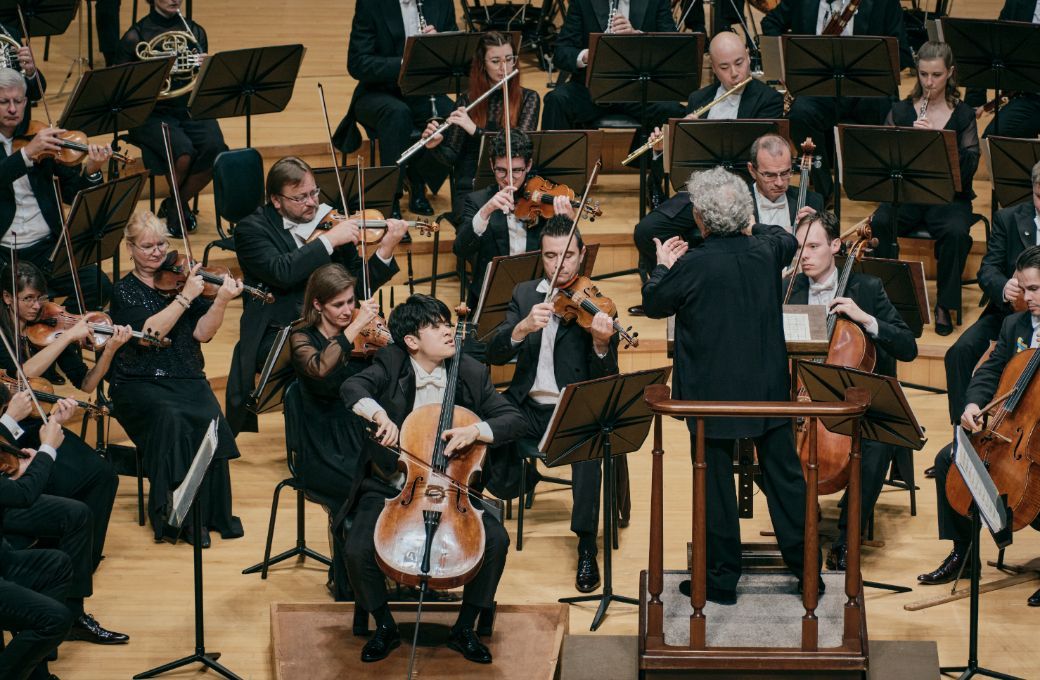News
Breadth and structure: Bychkov and the Czech Philharmonic master Lotte Concert Hall
bachtrack / 2025.10.30
SangKwon Lee
At Lotte Concert hall, the Czech Philharmonic handled the space on their own terms. To accommodate the hall’s long bloom, basic tempi were set a touch broader, yet the heartbeat never slackened and the rhythm kept its spring. They made a deliberately sovereign sound, each instrumental choir speaking in a full, finished voice so that the structure read cleanly. At the same time the balance was adjusted with chamber‑music speed and finesse. An acoustic that can be notoriously tricky felt, on this night, domesticated.
In Dvořák’s Cello Concerto in B minor, a brief misfire at the soloist’s first entrance became, paradoxically, the prelude to poise. When Jaemin Han’s opening line didn’t mesh squarely with the orchestra, he recalibrated at once: eyes locked on the podium, breath and pulse reset, and the melody slipped back into the ensemble’s lattice with disarming composure. It registered not as recovery but as authority. Bychkov, for his part, showed the conductor’s version of good manners. Tutti sonorities swelled until they filled the room, then shed weight in an instant to clear space for the solo voice. Dialogues were cleanly laid out; the exposition’s paragraphs were stated with technical assurance and a plain‑spoken tone.
In the Adagio, the notorious hinge – Dvořák’s poco accelerando and the abrupt return to tempo primo – was tidied with no drama. Han’s long‑breathed cantilena is not yet in its final finished state, but in the cadenza‑like surges he revealed an unmistakable virtuoso temperament. The finale found an elegant elasticity between cello and concertmaster; rubato passed fluently back and forth and the last ritardando held its shape. No indulgence, no hurry.
After the interval, Bychkov and the orchestra were at their most coherent in Tchaikovsky’s Fifth Symphony. The slow introduction brought a bassoon sound so ample it felt almost cavernous, conferring depth and relief. Once again the base tempo, broadened for the hall, kept an inner spring. The first subject set out with unforced weight; tension stayed a fraction ahead of relaxation, enough to give the music a crisp profile without roughening the surface. In the Andante, the horn sang achingly; the strings responded in warm grain; flute and woodwind colleagues appeared between them in quick flashes. Bychkov took the composer’s alcuna licenza literally but judiciously: enough rubato to breathe, not enough to sever the line. The climax kept its balance, the quiet close arrived as calm rather than coma.
The Valse maintained its surface elegance while the crossing phrases that pass from section to section created genuine three‑dimensional shading, unexpected depth without fog. Rhythmic spring combined with composed articulation so the movement glided forward with no haze, the armature of the dance clearly drawn. In the finale, structure and energy were preferred to raw speed. Bychkov chose a stable, stately tempo that honoured the score’s grandeur. The Maestoso introduction was broadly sung and the principal theme arrived not as a gaudy banner but a true chorale. The gear change into Allegro vivace was decisive but never brusque; crucially, Bychkov refused the mistaken accelerando that brightens the surface while sacrificing clarity in the bass.
This Fifth was not engineered for dazzle or instant catharsis. It dug into the piece and kept faith with its architecture and narrative. Compared with the hot‑blooded Russian-Soviet tradition, this approach was plainly more restrained, but never dry. What emerged was elegant, contemplative Tchaikovsky that valued proportion, diction and the long view. In a hall that can tempt players into sprawl, Bychkov and the Czech Philharmonic found breadth without bloat and, in doing so, made Lotte Concert hall feel like theirs.



